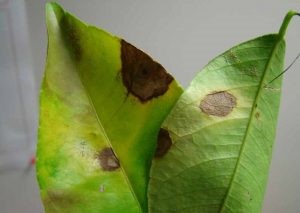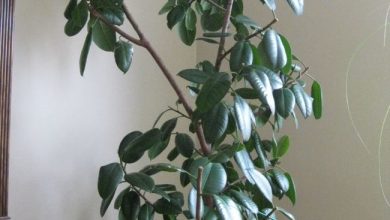Seed germination: How to prepare the seedlings or seedlings

Creating and maintaining a garden requires good planning from the beginning, what is the first step to take if we want to set up a garden? Prepare the seedlings or seedlings. It is a process by which we germinate the seeds that the plants in our garden will give. As you can imagine, germination and seedbed preparation is a very important process .
To further facilitate the preparation and maintenance, we propose a step by step to prepare seedbeds and vegetable garden varied and adapted to the available space.
What to sow and when?
The first thing is to define what vegetables we want and can have in our garden. You will choose the vegetables that you like the most in the family, but also the space and the conditions of the place will be decisive.
You can start with a list of what you want to harvest and then define the varieties. In an urban garden, the volume of containers that can be installed will determine, for example, the variety of vegetables that you can choose based on the conditions they need and the production you expect.
Another situation to consider is the availability of resources (water and sun), this is also important in the cultivation of vegetables and is essential for seedlings.
In addition, it will be necessary to consider the season of each of the vegetables, for which it is necessary to review the sowing calendar.
The seeds
Different types of organic seeds are marketed that have certification from the European Union regulations: AB: Organic Agriculture; NT: Not Treated; BIO: Biological; ORG: Organic; ECO: Ecological.
In addition, the Ministry of Agriculture, Food and Environment of Spain has a database of Organic Production Seeds for all inquiries. In other countries there are also databases in different extension agencies and institutions.
On the other hand, it is convenient to select those autochthonous varieties, as they guarantee a good adaptation to the climatic conditions and soils of the region.
It is also possible to obtain and reserve your own seeds, as well as participate in the exchange of seeds with other farmers to expand the variety of the garden.
The seedbeds
Although the seedbed is important for some vegetables, not all of them withstand transplantation and are planted directly in the ground or in the final container (for example, carrots, radishes, beets, squash, melon, cucumber, watermelon).
However, for some plants, the seedbed is the most suitable place to start the productive and reproductive life of the plant, so it is a procedure of vital importance for the growth of silver and the production of the fruit, guaranteeing the success of the crop.
On the other hand, seedbeds allow better management of environmental conditions for earlier crops; While the seed in the ground will wait for the favorable conditions to grow, in the seedbed we can produce or improve the conditions for it to be triggered.
For a seedbed you basically need the following elements:
- Tray with holes, or glasses, useful for placing the substrate and seeds, and that allow the optimal conditions of light, temperature, humidity and fertility to be adapted to the early stages of development.
- Seeds of different vegetables, those that you have obtained in the market or exchange.
- Substrate and compost, so that it has good water retention and aeration, a mixture is usually prepared (50% compost, 40% coconut fiber, 10% arlite or perlite)
- Labels to identify each hole, tray or glass where the seedling will be produced.
The step-by-step process for sowing in seedbeds
- The seed tray or containers are filled with a layer of at least 4 cm of substrate, almost to the edge and that is well even in all containers, without pressing the substrate excessively.
- A small hole of about 2 cm is made, just a little hole with your finger. The substrate should have some moisture, if you think it is missing, you can spray it with a little water.
- In the hole you put the seeds, two or three per hole if they are small seeds, do your best not to put more. You can help yourself with a clamp or something similar. A trick for seeds that are too small. They cannot be handled individually, is to mix them with a little sand, to distribute the mixture «by eye» as best as possible among the seed containers.
- To cover the seed you could use the same substrate or also just compost. This cover should be about 2 times the diameter of the seed.
The seedbeds need a lot of attention to watering. All the irrigation that is done to them must be done in the form of dew or very fine rain, since it will be necessary to avoid puddles from forming and removing the substrate in the containers.
As these containers are highly photosynthetic, they are very sensitive to any change and may not survive sudden changes in temperature or humidity.
To avoid any disturbances and ensure conditions are maintained, seedbeds are often covered with transparent plastic as a greenhouse, which in turn provides protection from wind and rain.
Remember that plantings are done in the morning hours and transplants are done in the afternoon to allow the plant to progressively adapt to change.
Seed germination
Each species has its germination and growth time, but conditions also influence these processes.
In general, the ideal temperature for germination is between 16 and 28 ° C, temperatures below 10 ° C and above 35 ° C inhibit germination. Light and humidity also play an important role and interact with temperature.
Other influencing factors are seed maturity, longevity, and storage conditions. Also, for medium and large seeds (such as pumpkin seeds) it is suggested to soak them a few hours before sowing.
The time of transplantation
Once the seedlings have grown enough it is possible to place them in their final place, taking care not to break the root. When does this happen? Well, in general, wait about 30 to 35 days, although this depends on the size that the seedling has reached depending on the conditions of the seedbed, the species and the variety.
In order not to be mistaken, it must be considered that the roots have occupied almost the entire seed container, containing the substrate so that it does not crumble at the time of transplanting.
A few days before transplanting, it is recommended to reduce watering to harden the plant, generating conditions more similar to those it will have in the final place.
However, just before transplanting, the seedbed should be sprayed to moisten the substrate and avoid damaging the roots at the time of transplanting.
In the final place a hole is made where the seedling will be put. Once the seedling is transplanted, the soil or substrate is pressed a little and watered.
Avoid these common seedling management mistakes
So far the task will improve with practice and, as you gain experience and confidence, the better the results in the garden will be. However, in addition to various factors that can affect germination, there are a few common failures in seedbed management:
- Inadequate substrate, although some commercial preparations are available, over time you will be able to improve the composition of the mixture according to the conditions of the garden, the seeds, the climate, among others.
- Uneven filling of the trays, glasses or seed containers, this will condition germination and growth.
- Sowing the seed very shallow or very deep.
- Irrigation in excess (washing or puddles) or insufficient (loss of moisture).

![Photo of Subpolar Climate: [Characteristics, Flora, Fauna and Adaptability]](https://www.complete-gardening.com/wp-content/uploads/2022/08/subpolar-climate-characteristics-flora-fauna-and-adaptability-390x220.png)


